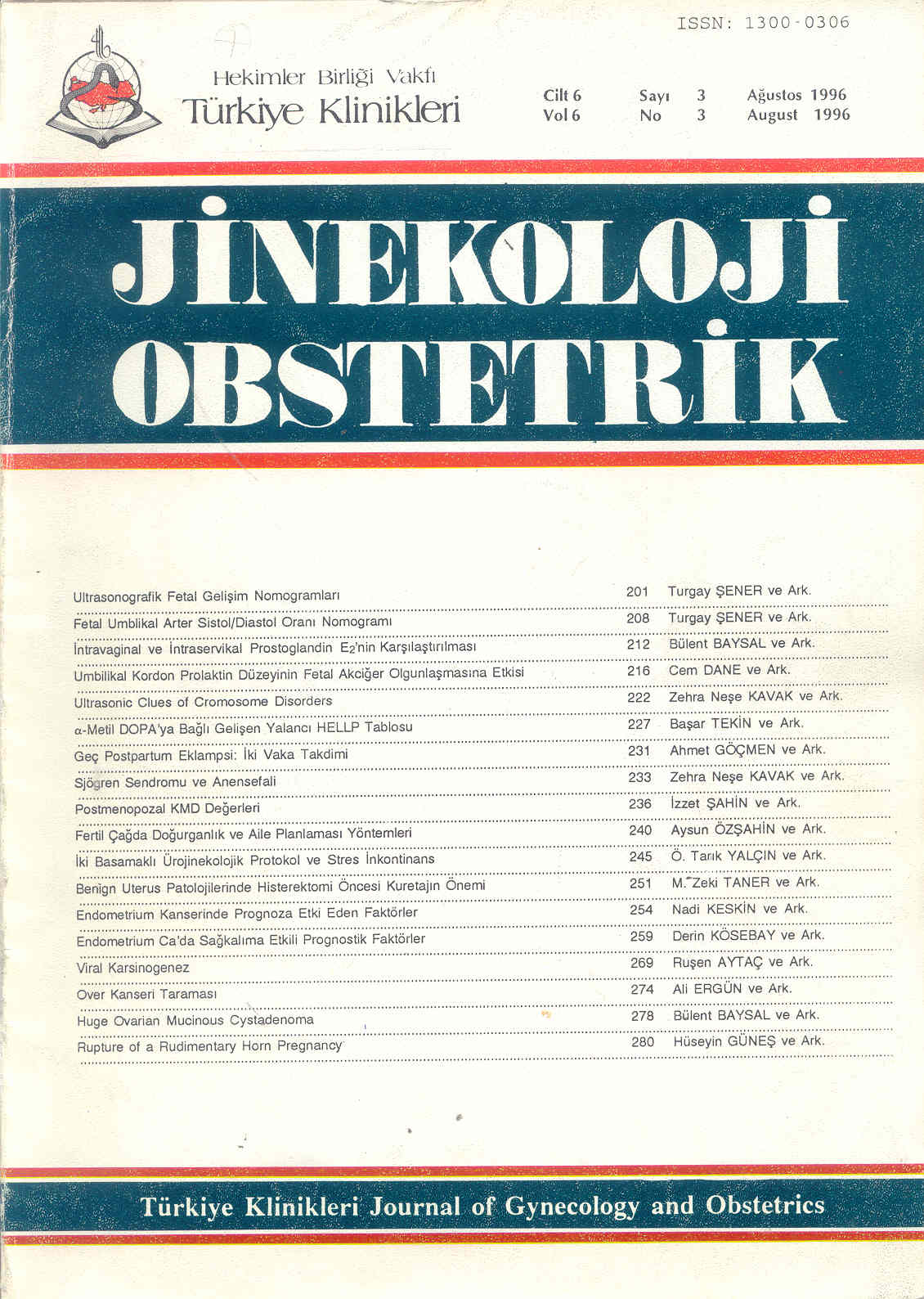Open Access
Peer Reviewed
ARTICLES
2942 Viewed1071 Downloaded
Ultrasonic Clues of Cromosome Disorders
Fetal Kromozomal Anomalilerin Ultrasonografik Bulguları
Turkiye Klinikleri J Gynecol Obst. 1996;6(3):222-6
Article Language: TR
Copyright Ⓒ 2025 by Türkiye Klinikleri. This is an open access article under the CC BY-NC-ND license (http://creativecommons.org/licenses/by-nc-nd/4.0/)
ABSTRACT
Trie Detection ot a chromosoi te anomaly at any stage of pregnancy is of gieat importance in obstetric management. About 6.5% of newborns have a fetai anomaly of some type, and in 3.2% of them, this anomaly is of major significance (1) Recognizable syndromes compose only 0.4% of these anomalies. Of these malformations, the greatest number are in the central nervous system, followed in frequency by the skeletal, cardicac and genitourinary systems. Less common problems are related to the gastrointestinal and respiratory tracts, with eye and ear problems being unusual. If one considers each of these various groups in relation to the chance for chromosomal problems, anomalies affecting the gastrointestinal tract are frequently associated with chromosomal problems (15%). They are followed by the cardiovascular system(14.3%), the central nervous system (7%), and the genitourinary system (1.8%). Particular findings with a strong association with chromosomal anomalies are cystic hygroma (70%), nonimmune hydrops (14%), duodenal atresia (20%-30%), omphalocele (30%), pleural effusion ( 10 % -15 % ) and diaphragmatic hernia (20%) (1,2). All these processes have recognizable ultrasonic features.
Trie Detection ot a chromosoi te anomaly at any stage of pregnancy is of gieat importance in obstetric management. About 6.5% of newborns have a fetai anomaly of some type, and in 3.2% of them, this anomaly is of major significance (1) Recognizable syndromes compose only 0.4% of these anomalies. Of these malformations, the greatest number are in the central nervous system, followed in frequency by the skeletal, cardicac and genitourinary systems. Less common problems are related to the gastrointestinal and respiratory tracts, with eye and ear problems being unusual. If one considers each of these various groups in relation to the chance for chromosomal problems, anomalies affecting the gastrointestinal tract are frequently associated with chromosomal problems (15%). They are followed by the cardiovascular system(14.3%), the central nervous system (7%), and the genitourinary system (1.8%). Particular findings with a strong association with chromosomal anomalies are cystic hygroma (70%), nonimmune hydrops (14%), duodenal atresia (20%-30%), omphalocele (30%), pleural effusion ( 10 % -15 % ) and diaphragmatic hernia (20%) (1,2). All these processes have recognizable ultrasonic features.
MENU
POPULAR ARTICLES
MOST DOWNLOADED ARTICLES





This journal is licensed under a Creative Commons Attribution-NonCommercial-NoDerivatives 4.0 International License.










